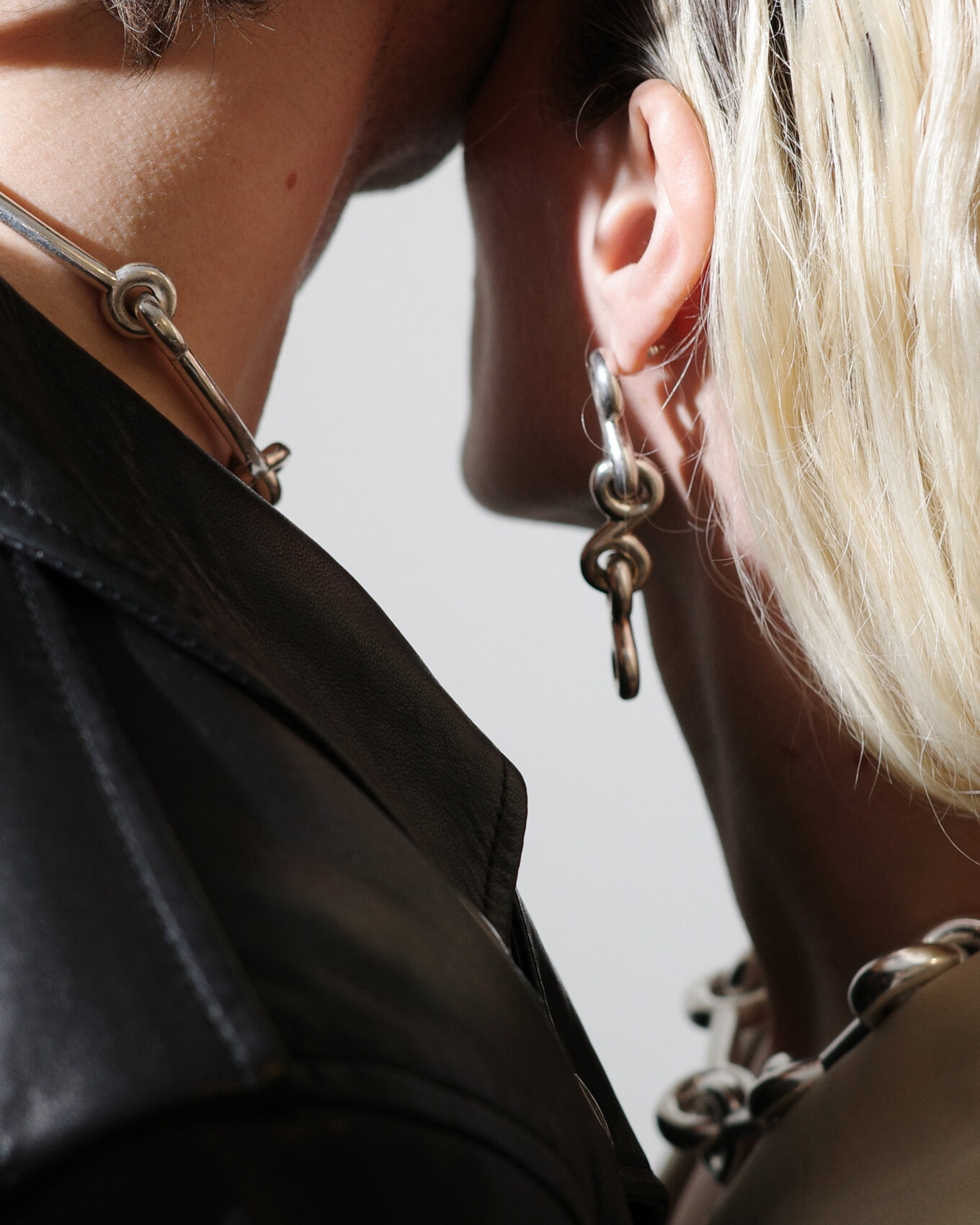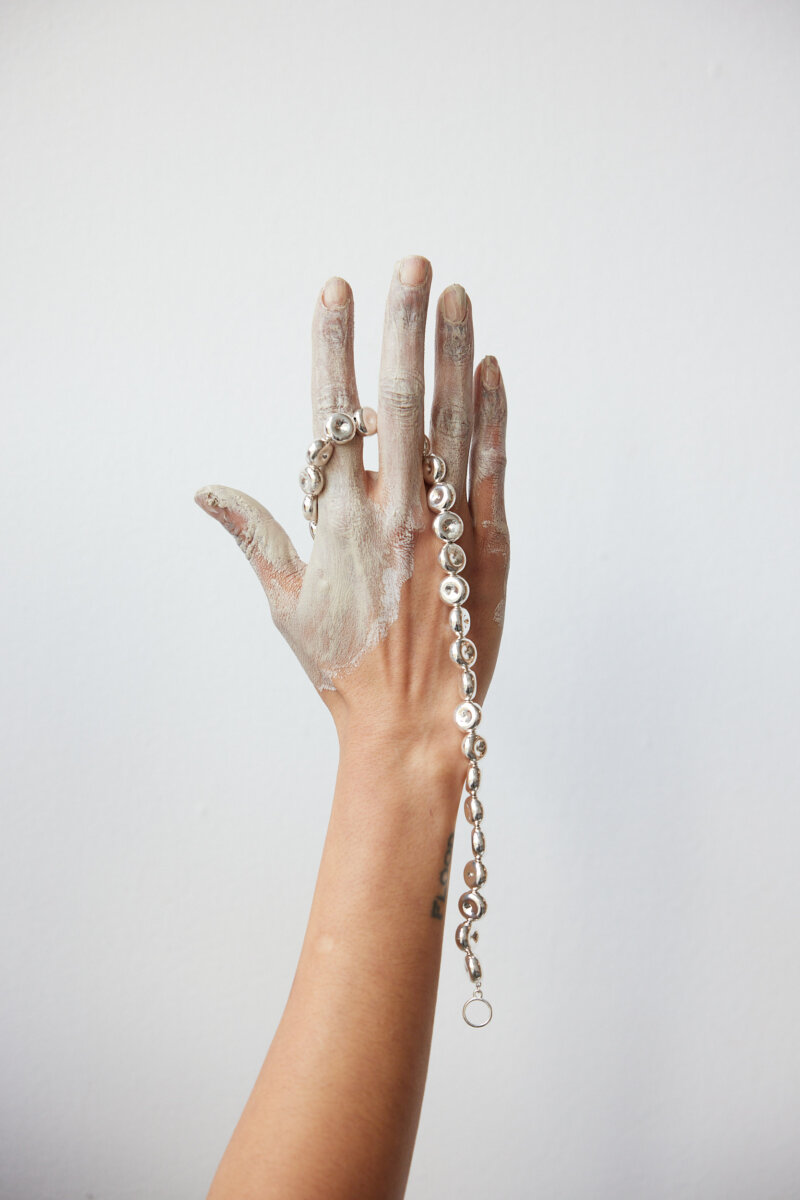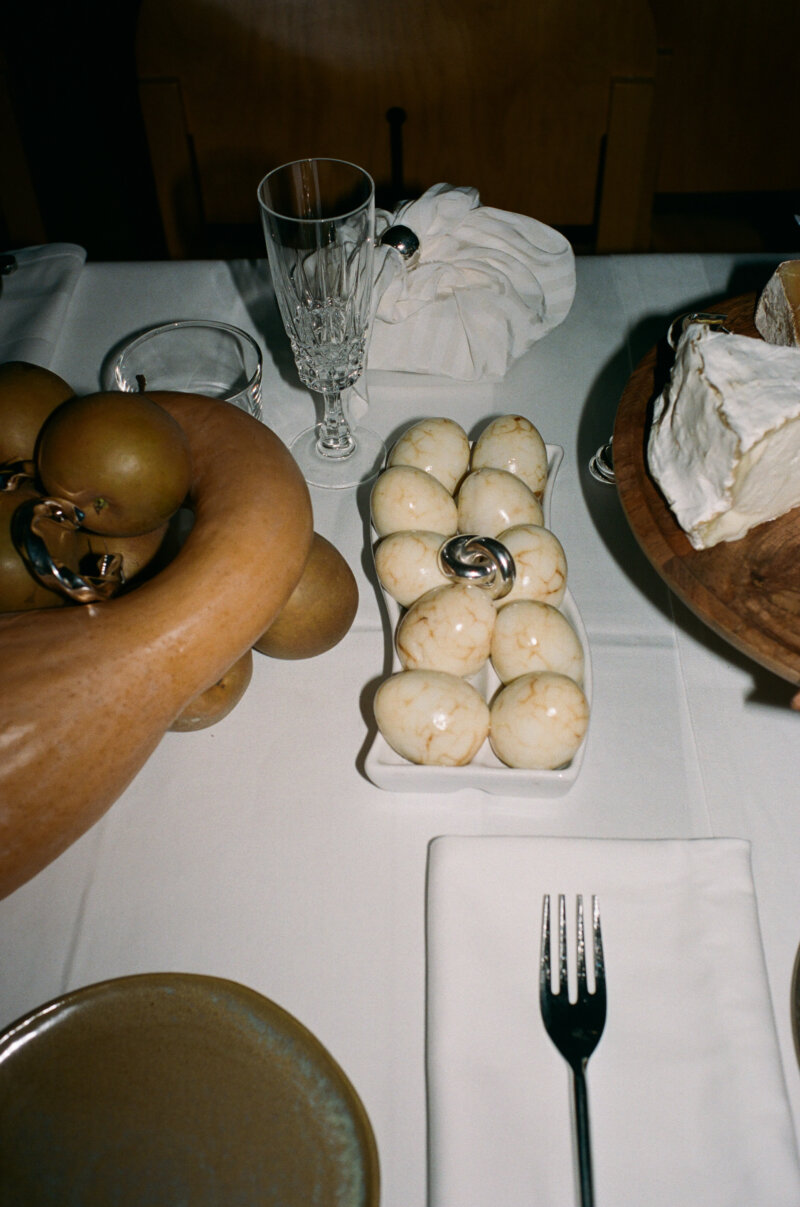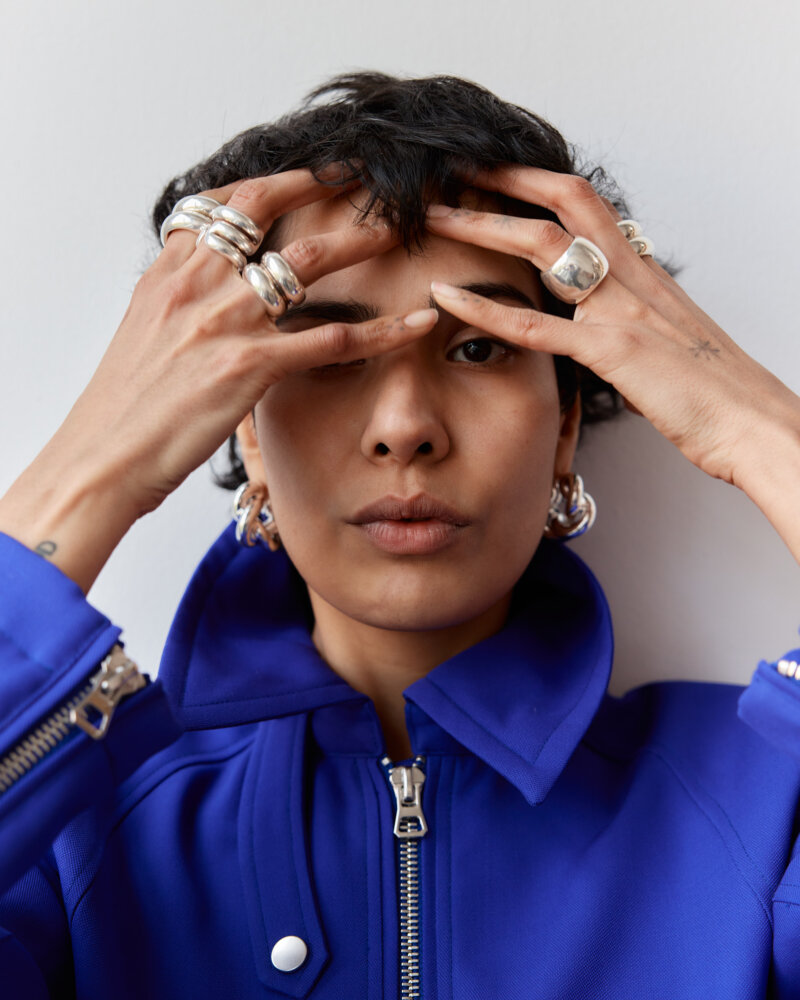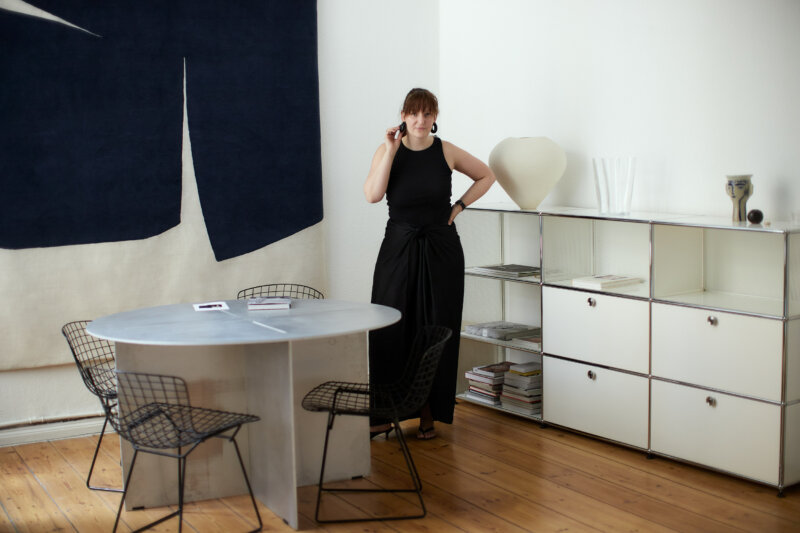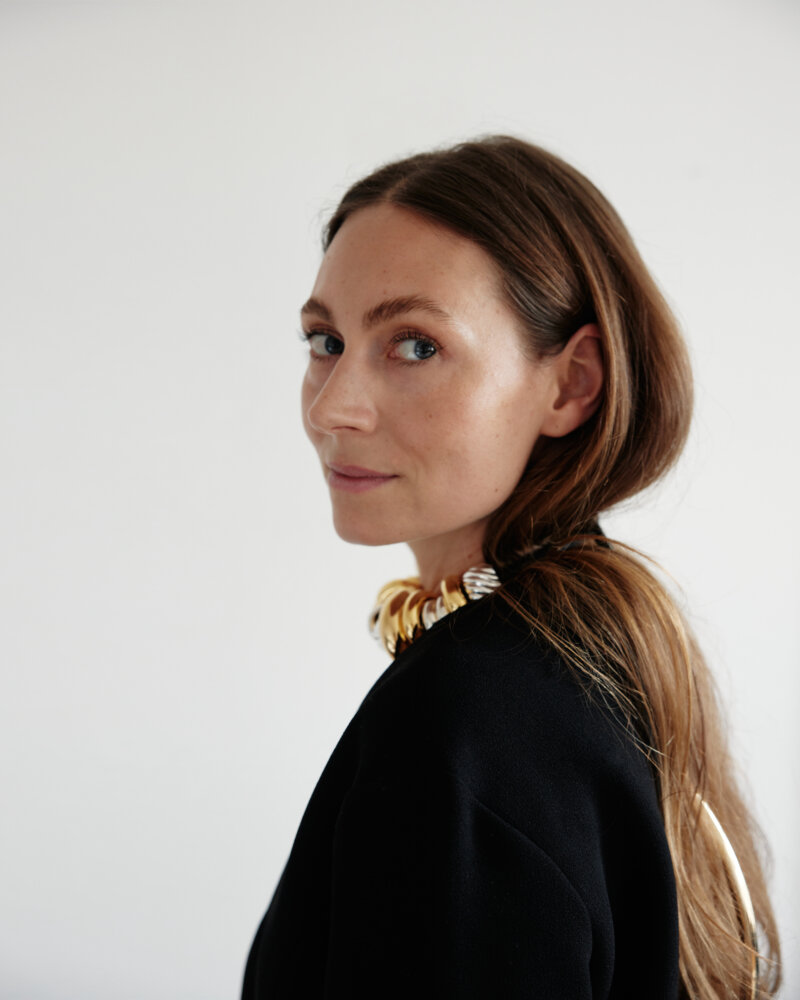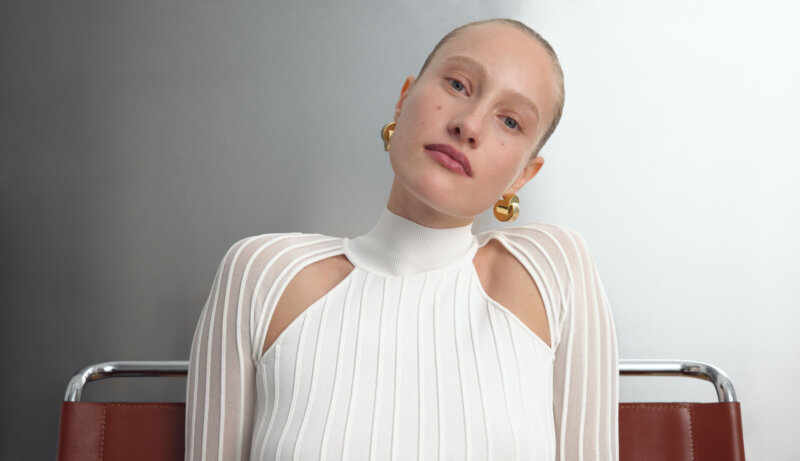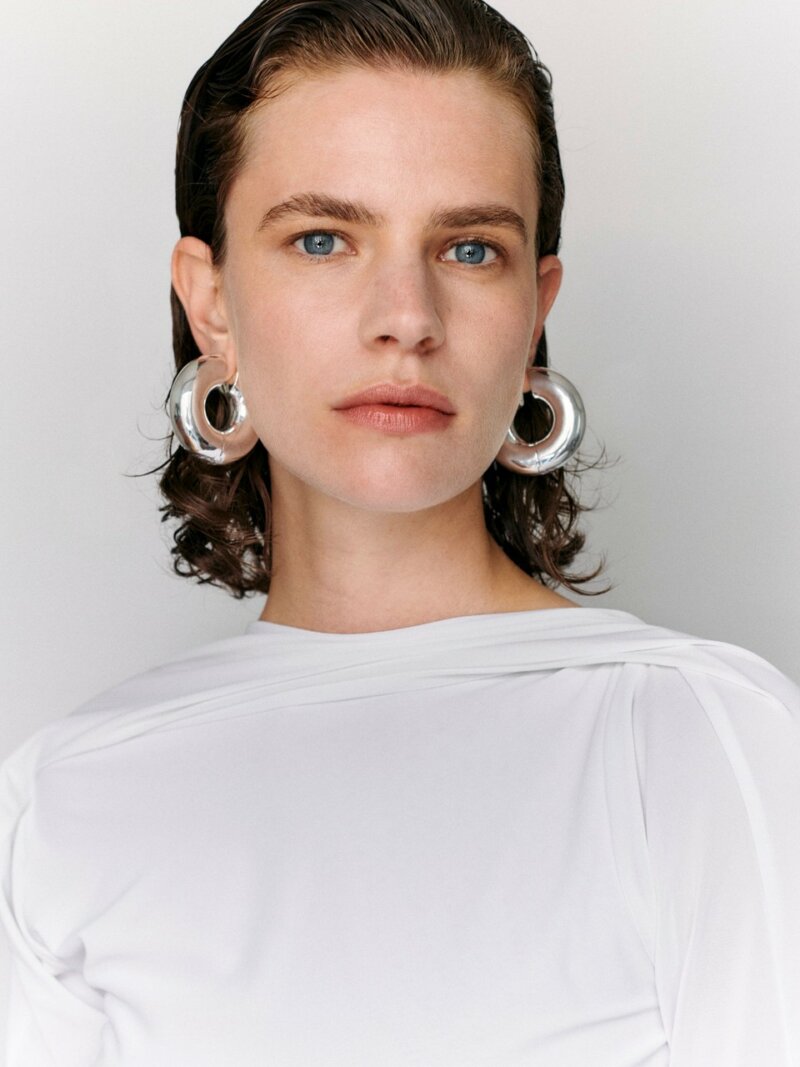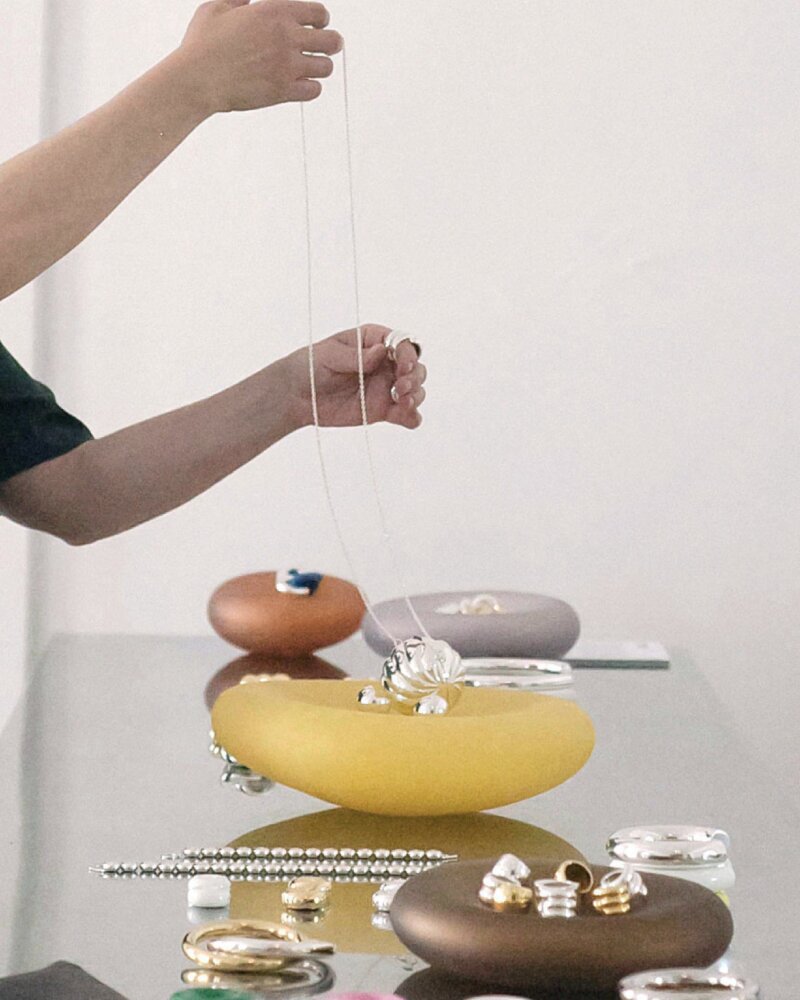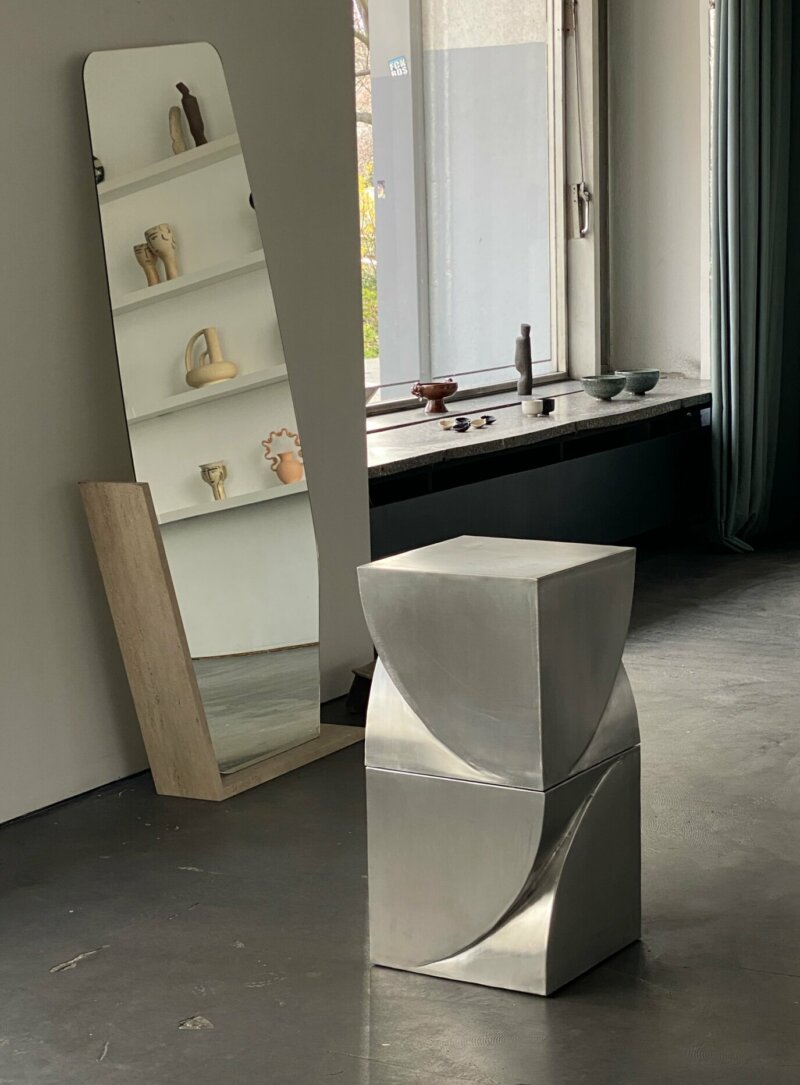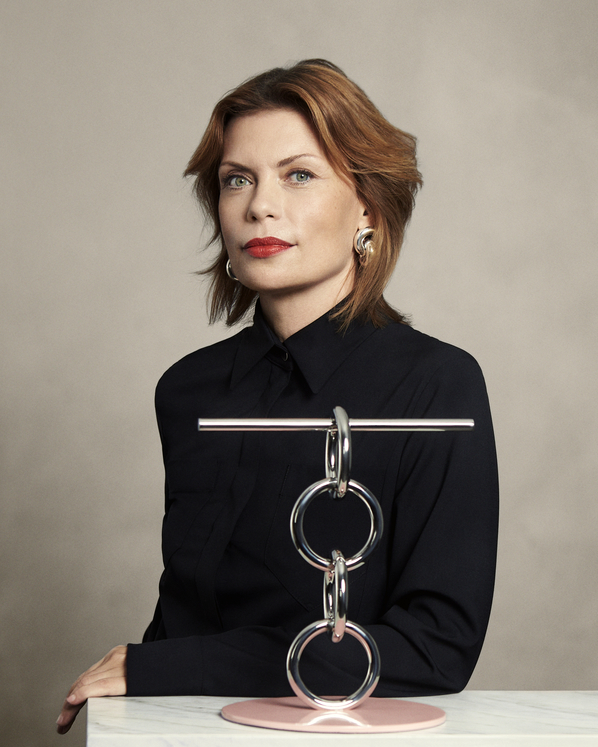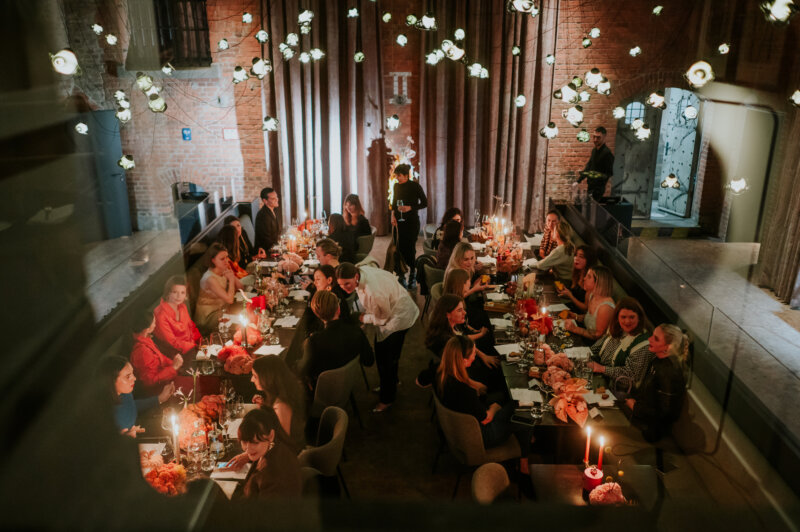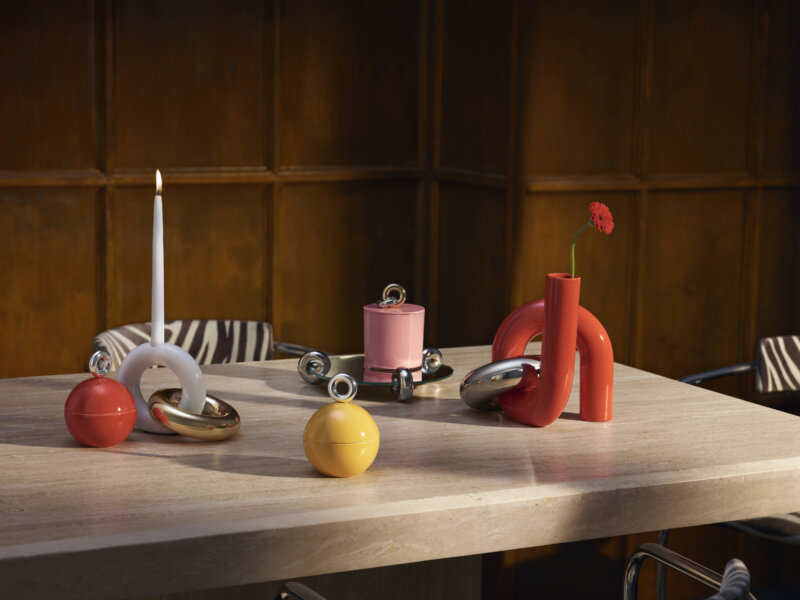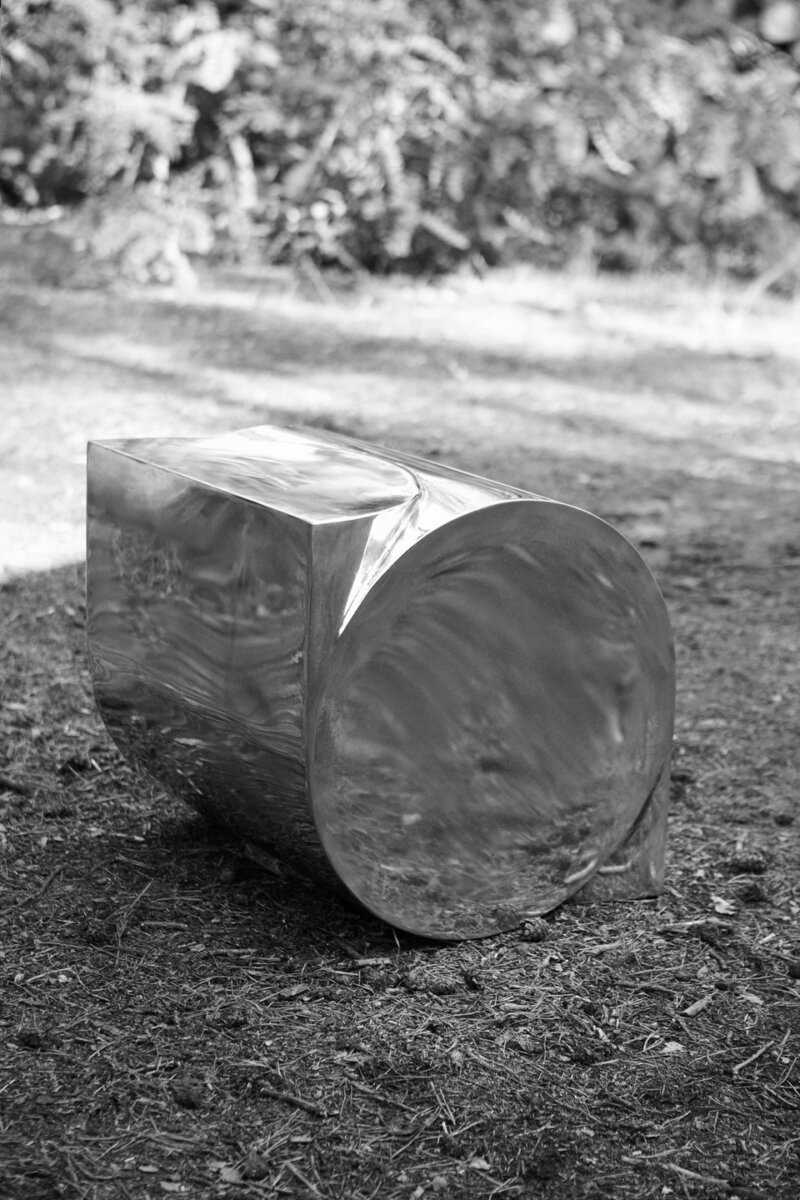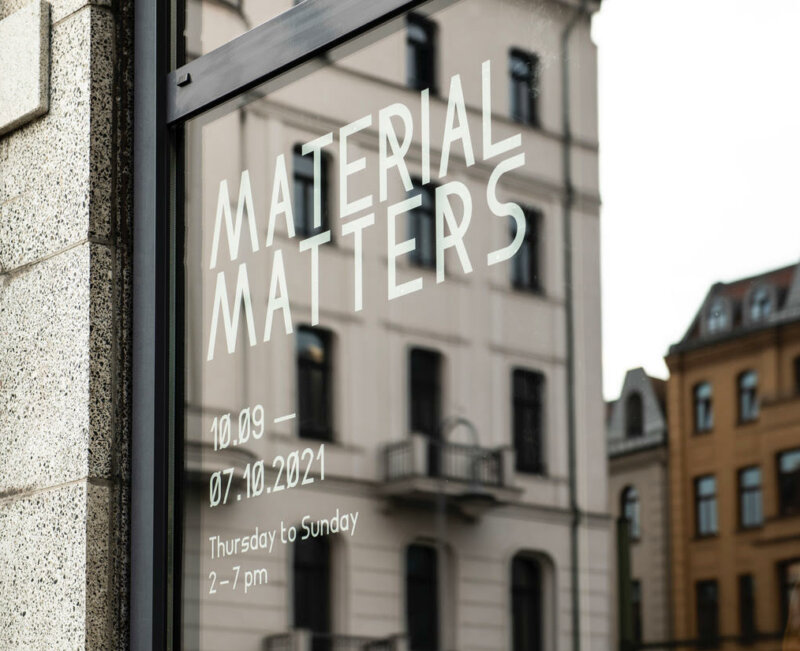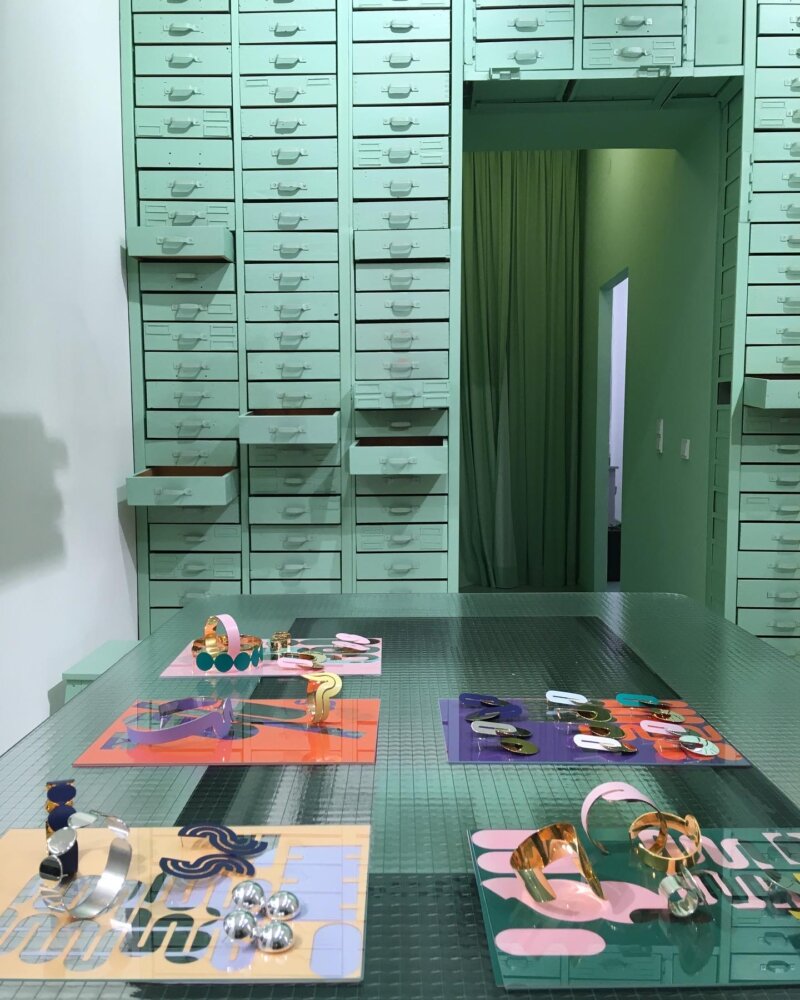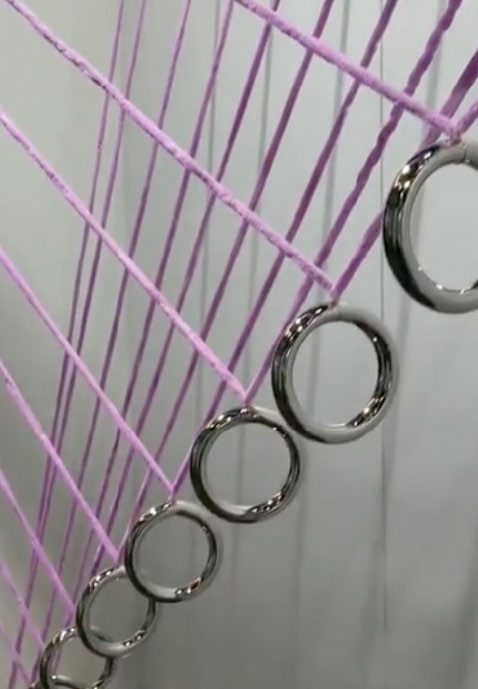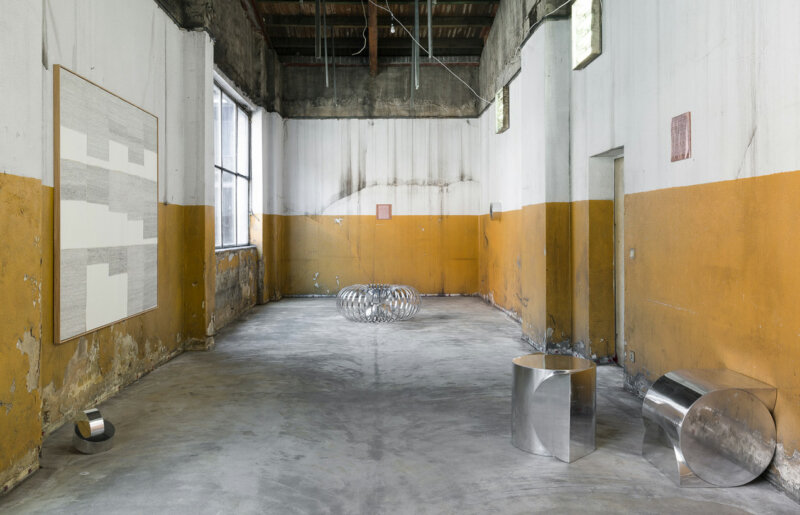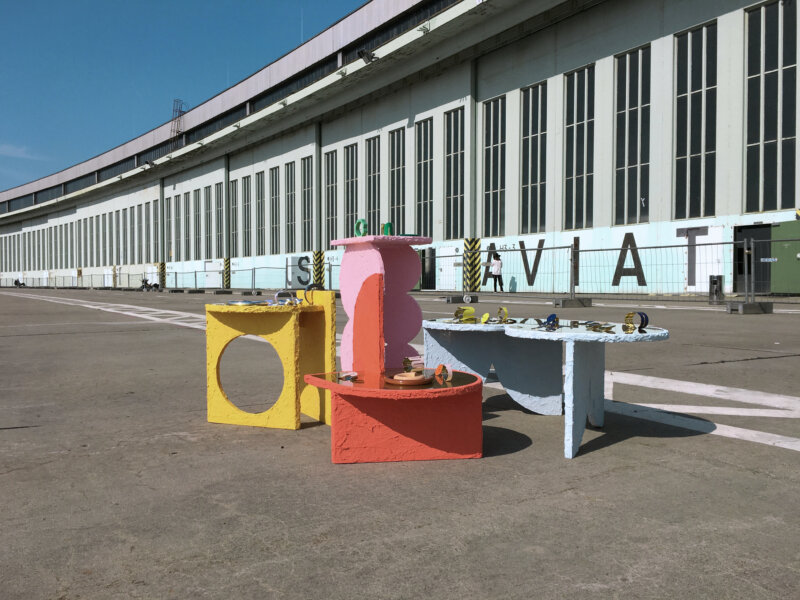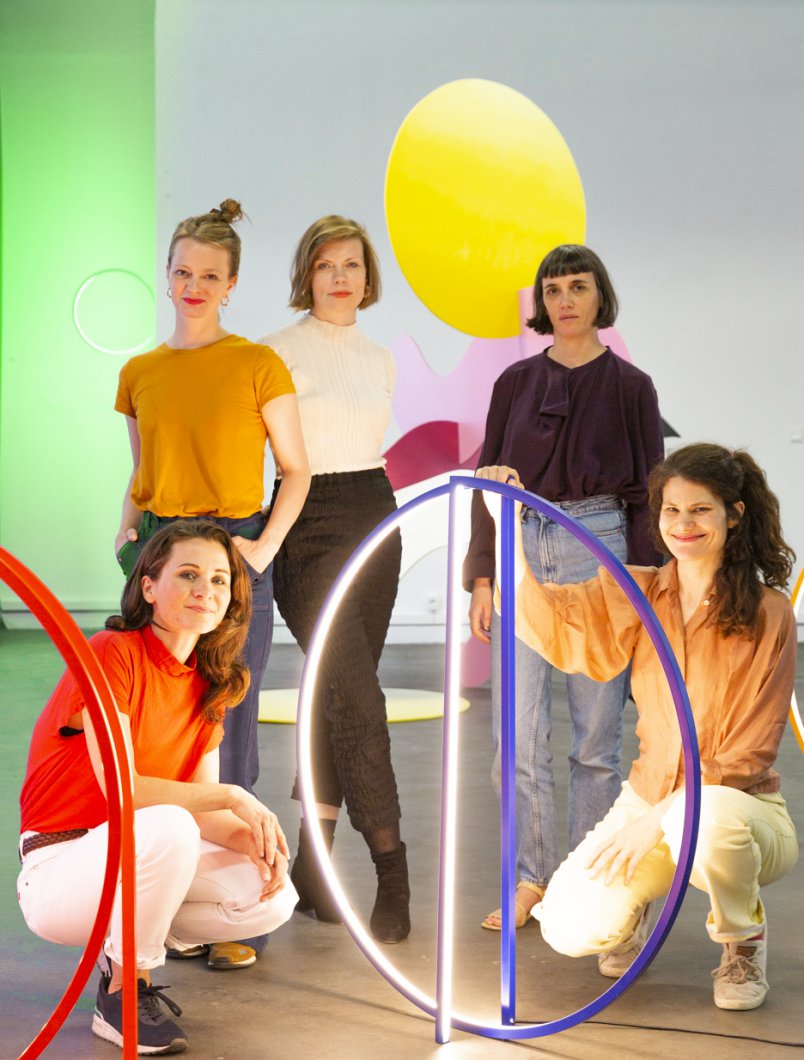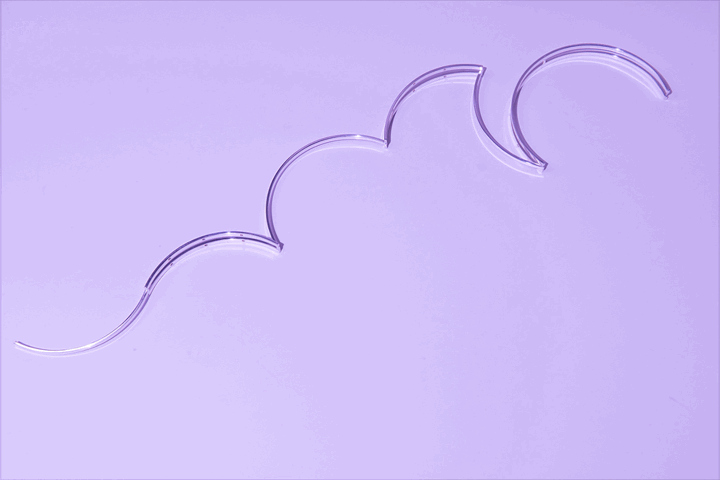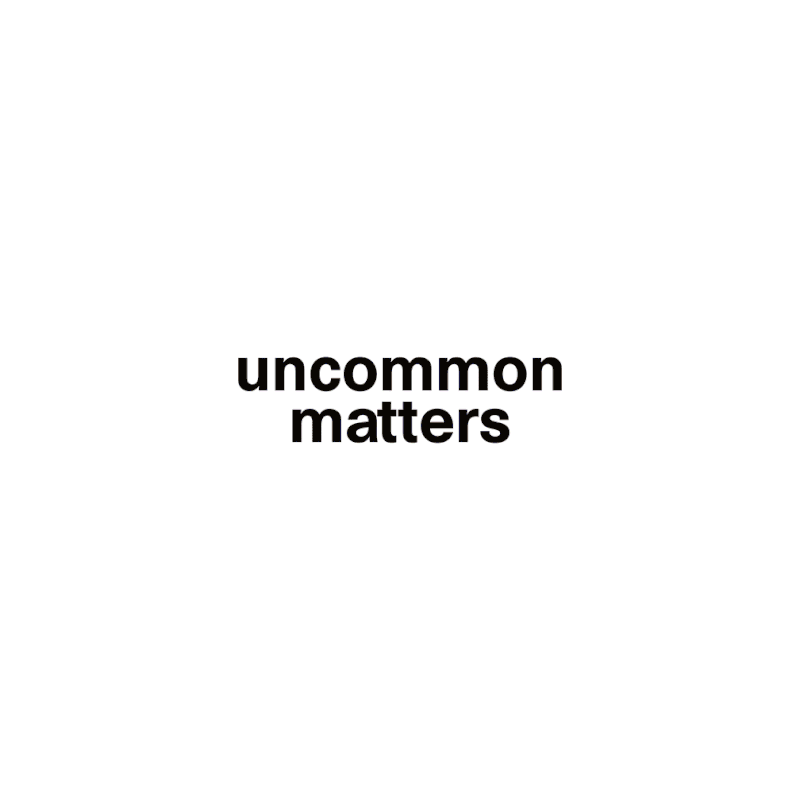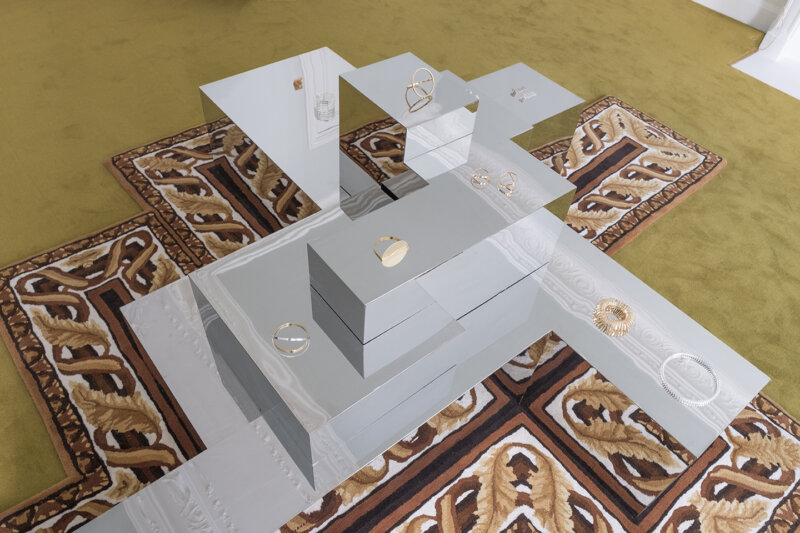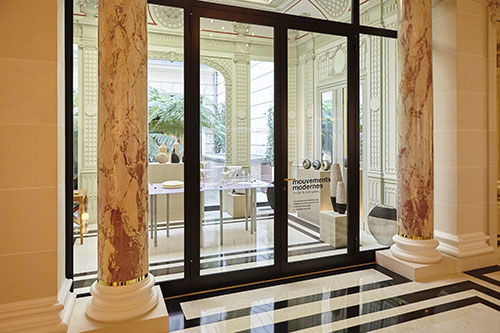*translated from original German*
VOGUE Germany features an Interview with our founder, Amélie Riech.
-
In our series on GERMAN FASHION, we are introducing UNCOMMON MATTERS this month: Its founder AMÉLIE RIECH makes JEWELRY for the fearless.
A very special trio has been spread out on a white tray that could have come from the cafeteria of an open-plan office. Here, a spiral-shaped egg cup made of chrome-plated metal meets a sticky Haribo snail in bright green. The organic potpourri is complemented by a deep black "Swell Bangle" bracelet from Uncommon Matters, whose round shape is only interrupted by its angular opening. Still-life lovers are now in seventh heaven. Common descriptions from the world of contemporary jewelry such as “arm-" or “ear-party" are certainly in the wrong place here. Because founder Amélie Riech has no desire for trivialities. She prefers to transform her geometric-minimalist visions into pieces that could also be found as miniature sculptures in a great art gallery - or, thanks to their photogenic nature, in editorials in the most important fashion magazines. Celebrities such as Jennifer Lopez, Kylie Jenner and Tracee Ellis Ross are just as crazy about the Berlin creations as copycat fashion giants. No wonder, because Riech, a trained architect, literally thinks outside the box with her designs for Uncommon Matters.
Architecture, fashion design, styling and now jewelry: you have already made a successful all-round hit in the creative industry. How is your professional career reflected in your jewelry?
I studied architecture and also have a degree in fashion design. After studying in Berlin, I worked as a designer in Paris, but in the first few years I mainly did styling, because it was easier for me to earn money with it. I founded Uncommon Matters at the same time because I felt the need to express my very own creativity. Whenever I design a piece, I don't just think about wearability and design, but also about how it looks in a photo. Staging is what I enjoy most and is in my DNA, so to speak. This allows you to take each product to another level. It gives me great pleasure to see how my collections are staged by so many great editors, in very different looks and styles and on a wide variety of women and men.
You already knew how to tailor a piece of clothing. But how did you learn to make jewelry?
I learned that autodidactically. Learning by doing. My first jewelry collection was of handmade porcelain and was therefore first exhibited in a gallery context. I intuitively resorted to this great material because my ancestors come from the Thuringian Forest with its famous Porcelain Road. Even as a child, I enjoyed spending time in the porcelain workshop and was fascinated by the magic of the material. For many creative people, the first collection is often driven by very personal things. Porcelain was therefore my first access to sculptural objects. After this premiere collection, I was hired by Paco Rabanne in Paris to work on the relaunch of the brand. This inspiring collaboration opened many doors for me and I was able to realize other great collaborations with brands such as Hermès. I built up a network of manufacturers, artists and artisans. To this day, I often work with manufacturers or producers who are not actually active in the jewelry sector. I believe that traditional craftsmanship can also be limiting. My pieces probably look different because I have not had a classic goldsmith training or a jewelry design degree. I always start by looking for a new combination of ideas, techniques or materials. Then, as a team, we research ways to implement these new ideas. A few years ago, for example, we resorted to the brass- instrument craft because it was impossible to realize our collection with jewelry producers. This cross-genre exchange is an inspiration for me.
While many of your design colleagues are wearing delicate chains with tiny pendants, you prefer to focus on boldness from the start. How did that come about?
I think it's important that the piece of jewelry can be seen clearly. Basically, I like generosity in design. From my perspective as a stylist, small pieces make less sense to me: combined with an exciting full look, they practically disappear on the model. In retrospect, the physical visibility of my jewelry helped me a lot to get a lot of placements in the international press. The pieces are photogenic and popular with stylists. The boldness is related to my idea of my ideal wearer. You have to be brave to wear larger pieces. You can't hide with them and you will be looked at. Some customers also say that they feel empowered when they wear Uncommon Matters pieces, and that's exactly what I want to achieve. They should boost self-confidence.
I find it interesting how you adapt your former work as a stylist to jewelry design. Speaking from this position, you know exactly how nerve-wracking it can sometimes be to make an advertiser's tiny ring visible in a production.
Exactly. From this experience, I started designing jewelry. The kind that simply didn't exist on the market ten years ago. XXL jewelry has now become a trend. I think it's great when the pieces also function as objects on their own, as a kind of small sculpture, or as jewelry in action and in interaction with a strong wearer.
How would you describe this design language?
My work is fundamentally minimal and geometric. I base this on the chaotic state of our world, which is becoming more and more hectic and confusing. Even in my private life with my children, there is always creative chaos. Through the architectural working method and through construction and geometry, I can create a kind of order. The reduced design language and the omission of unimportant things help me to find clarity. I find the minimalist style not only beautiful, but also calming. And it can also be playful. The design process also requires space and time to experiment and for fun and games - this is the only way to achieve innovation. It is not for nothing that some of our colored shapes are reminiscent of children's toys. Playfulness is in all of us...
Many A-list celebrities like Jennifer Lopez are also enthusiastic about your intuition and wear your designs. How would you classify your professional relationship with celebrities?
Unfortunately, I don't know JLo personally, but at least I know her stylist. (laughs) These many features definitely have something to do with the fact that the pieces of jewelry are very eye-catching and look great on many women. Once you have had a big release, you naturally get a lot of attention. It started with my porcelain collection, which was worn by Tyra Banks and Beyoncé. I also have an agent in New York who takes care of lending the collection to all the celebrities. In the USA in particular, there are many more opportunities and events than here, but the stars who wear my jewelry are also simply more internationally relevant. Of course, celebrities always need new things - this high demand makes it easier to build a good relationship in the long term. That's why my biggest market is there. It's only since I've been living in Berlin and selling online on Zalando that I've noticed that demand is increasing in Germany too.
This confirms the much-discussed German reticence when it comes to fashion. Here, the fine-silver chain that almost disappears into the neckline beats the conceptual arm cuff.
Exactly. Another interesting market for me is Asia. For example, Japan, Korea and China, where people are much more fashion-conscious and willing to experiment than here. But things are slowly starting to happen in Germany too. We have a deep tradition in the areas of contemporary jewelry, as well as in jewelry manufacturing. It is therefore great to see that there are many customers in Germany, Austria and Switzerland, who are venturing into spectacular jewelry. My German customers include curators, journalists and architects. In other words, people who are interested in art, fashion and design, but also those who are simply style-conscious.
Recently I was invited to a press dinner where half of the invited fashion editors wore the same earrings. Of course, in conversation we came to the obvious visual similarity. Everyone quickly admitted with a grin that their pair was of course not the original brand, but a cheap copy. How can it be that luxury counterfeits of logo handbags, for example, are frowned upon, but there is a real boom in the jewelry sector?
Unfortunately, I often have designs copied. Last year there was even an incident where an entire collection was imitated. As a designer, I obviously have a big problem with that. I cannot support brands that do not invest in design, but just copy everything. But there is not much I can do about these fakes. Together with my intellectual property lawyer, we write cease and desist orders to these brands, but I cannot afford to sue large multinational brands. Brands that get "inspired” by others, know exactly how to copy within legal gray areas and that smaller brands cannot afford legal costs. There is only one thing left for me to say: "Take it as a compliment!" It is not that easy, and I almost thought about quitting. It felt as if someone was breaking into your house and stealing all your favorite pieces. The bad thing is that it is my greatest potential, my creative ideas, that differentiate me from other brands. I cannot understand why so many companies today invest only in marketing instead of design, without any ethos.
Wouldn't Instagram's fashion police, Diet Prada, be a cost-effective platform to draw attention to these cases?
Of course Diet Prada is important and relevant. But personally I don't like to dwell on negative experiences and always try to draw something positive from everything. I see it more as an incentive to keep going and make my brand even more popular. It is not easy to compete as a completely self-financed company against the great competition from fast fashion giants and luxury brands. But look, now I'm sitting here and we're talking. This kind of appreciation motivates me a lot.
What exciting national and international projects are you currently working on?
In the near future, I'm planning a fine jewelry collection. With recycled, fine materials, I could reach an even more timeless and therefore more sustainable level. I'm currently looking for an investor for this venture. I designed a home line for H&M Home in 2022. That was so inspiring for me that I'm currently working on my own homewear collection. I really enjoy implementing a vision for Uncommon Matters that can grow in other areas, inspired by jewelry ideas. I actually feel like getting involved with fashion and clothing again. My dream is to implement my brand as an overall concept. What moves me every day as a businesswoman and as a private person is to find positive solutions to current problems. My priority right now is to ensure the future viability of my company and to rethink environmentally harmful aspects such as shipping.
Valerie Specht
—
*translated from original German – read the original here*




